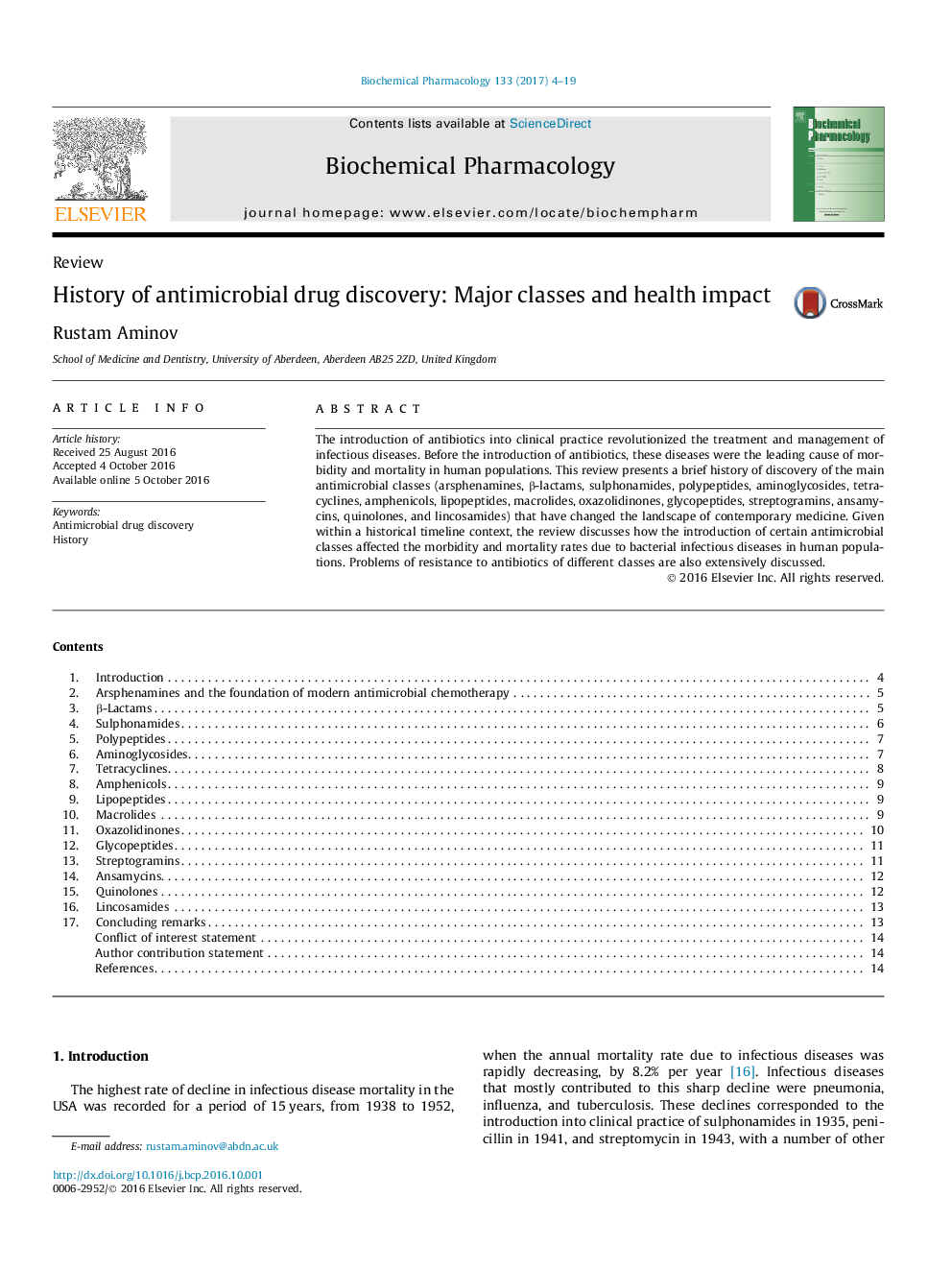| Article ID | Journal | Published Year | Pages | File Type |
|---|---|---|---|---|
| 5552244 | Biochemical Pharmacology | 2017 | 16 Pages |
The introduction of antibiotics into clinical practice revolutionized the treatment and management of infectious diseases. Before the introduction of antibiotics, these diseases were the leading cause of morbidity and mortality in human populations. This review presents a brief history of discovery of the main antimicrobial classes (arsphenamines, β-lactams, sulphonamides, polypeptides, aminoglycosides, tetracyclines, amphenicols, lipopeptides, macrolides, oxazolidinones, glycopeptides, streptogramins, ansamycins, quinolones, and lincosamides) that have changed the landscape of contemporary medicine. Given within a historical timeline context, the review discusses how the introduction of certain antimicrobial classes affected the morbidity and mortality rates due to bacterial infectious diseases in human populations. Problems of resistance to antibiotics of different classes are also extensively discussed.
Graphical abstractDownload high-res image (180KB)Download full-size image
